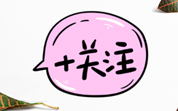部分原文报道如下:
The present opinion deals with the re-e
valuation of shellac (E 904) when used as a food additive and with the new application on the extension of use of shellac (E 904) in dietary foods for special medical purposes. The Panel derived an acceptable daily intake (ADI) of 4 mg/kg body weight (bw) per day for wax-free shellac (E 904) produced by physical decolouring, ba
sed on a NOAEL of 400 mg/kg bw per day and applying an uncertainty factor of 100. The Panel co
ncluded that the ADI of 4 mg/kg bw per day should be co
nsidered temporary for wax-free shellac (E 904) produced by chemical bleaching, while new data are generated on the identity and levels of the organochlorine impurities in E 904. This ADI is not applicable for wax-co
ntaining shellac as a food additive. For several age groups, the ADI was exceeded at the 95th percentile in the non-brand-loyal exposure assessment scenario and maximum level exposure assessment scenario. Co
nsidering the low exceedance and the fact that both the exposure estimation and the toxicological e
valuation of shellac were conservative, the panel co
ncluded that the calculated exceedance of the ADI does not indicate a safety concern. The Panel recommended to the European Commission separating specifications for E 904 depending on the manufacturing process, chemical bleaching and physical decolouring, because they result in different impurities; revising the definition of the food additive to include a des
cription of each manufacturing process; deleting information on wax-co
ntaining shellac from the EU specifications; revising the acid value for wax-free shellac produced by chemical bleaching; lowering the maximum limit for lead; to co
nsider introducing limits for other toxic elements potentially present in shellac; including a maximum limit for chloroform and total inorganic chloride in the EU specification for shellac produced by chemical bleaching.
本文由食品伙伴网食品资讯中心编辑,供网友参考,有任何疑问,请联系news@foodmate.net。












 地区:
地区:






 鲁公网安备 37060202000128号
鲁公网安备 37060202000128号



